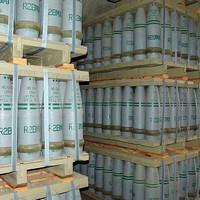Recent fears surrounding the possible use of chemical weapons stockpiles by regime diehards in Libya and Syria, or their seizure by regional terrorists, underscore the continued danger of chemical weapons proliferation and the need to take stronger measures to oppose it.
The use of a significant quantity of a chemical agent in a concentrated area can not only be extremely deadly. Because the effects of exposure to chemical agents occur rapidly and are usually extremely virulent, chemical weapons are also effective tools of psychological warfare. Moreover, under certain conditions, even a minor chemical weapons attack could cause widespread panic, leading to economic loss that would transform limited attacks into major incidents.
Chemical weapons have been successfully manufactured and used by terrorists as well as by national governments, underscoring that they are the easiest weapon of mass destruction to make, acquire and use. The Aum Shinrikyo cult in Japan undertook a large-scale program to develop WMD during the early 1990s. Despite investing considerable resources, the cult was unable to develop nuclear or biological weapons, but it did succeed in developing and launching several chemical attacks using sarin gas.

